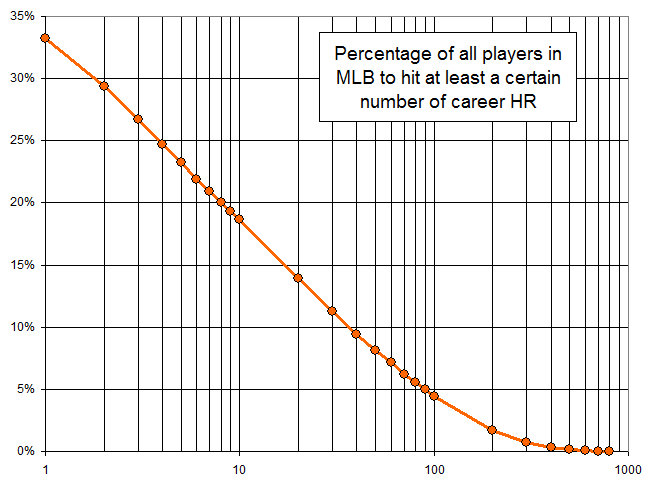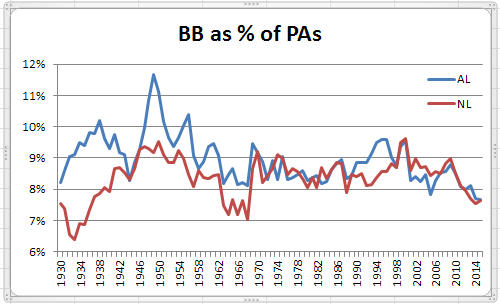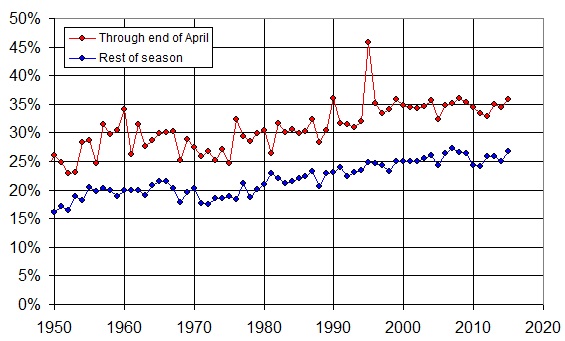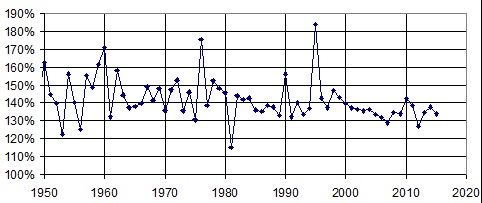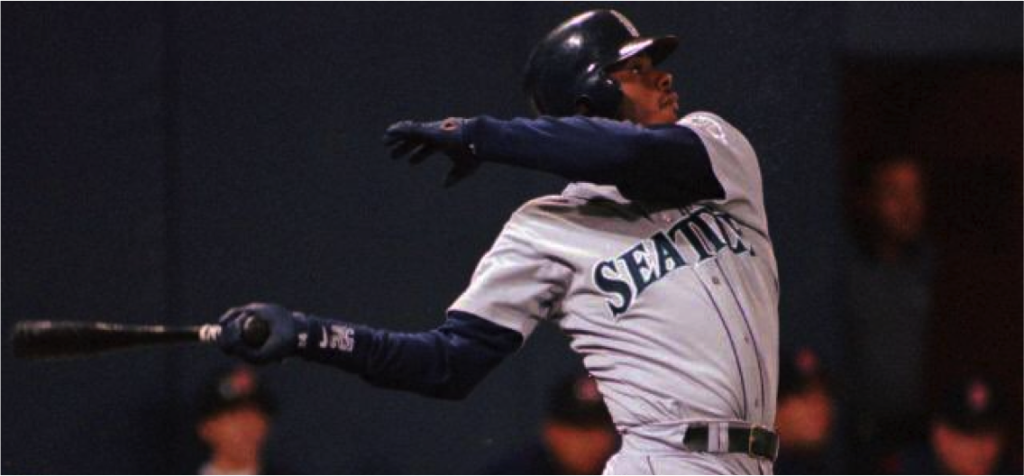 The 21st century is quickly bringing about a variety of changes that the baseball community desperately needed. We now have real consequences for performance-enhancing drug users, instant replay to ensure that “human error” doesn’t affect the most pivotal moments, and cooler stats than ever at our fingertips. Coming up next, MLB is trying to create a safer in-stadium experience and continuing to experiment with ways to improve the pace of play.
The 21st century is quickly bringing about a variety of changes that the baseball community desperately needed. We now have real consequences for performance-enhancing drug users, instant replay to ensure that “human error” doesn’t affect the most pivotal moments, and cooler stats than ever at our fingertips. Coming up next, MLB is trying to create a safer in-stadium experience and continuing to experiment with ways to improve the pace of play.
Unfortunately, there is no indication that innovation fever will carry over to the National Baseball Hall of Fame anytime soon. Frustrating inconsistencies continue to plague its induction process.
Ken Griffey Jr. and Mike Piazza will become Cooperstown’s newest additions this summer. Both of their careers featured extraordinary peaks and impressive longevity, with Griffey in particular passing every conceivable empirical and intangible test of excellence.
But for reasons that still haven’t been revealed, three participating BBWAA voters excluded him from their ballots. So continues the sport’s longest streak: 80 years of experienced scribes finding some fault in every player’s career (no unanimous inductees).
Of course, Griffey does not need your pity. He’s headed for enshrinement regardless. The true victims of the process?
- Stars of previous generations who were under-appreciated in times of weaker analysis
- Griffey contemporaries who, despite historic accomplishments, have been withheld from the Hall for perceived “character issues” (several based on pure speculation)
- Borderline candidates who fell off/will soon fall off the ballot because of arbitrary limits on years of eligibility and total selections allowed per voter.
There’s never going to be a consensus on how to fix this, and that’s not what this column is about, anyway. Instead, I invite you to escape from reality for the next few minutes as we imagine a Hall of Fame that would actually celebrate baseball’s most impactful players.
For this exercise, we will toss aside the narratives, accolades and personalities. The focus is solely on in-game value, as measured by Baseball-Reference’s Wins Above Replacement. What names would be affiliated with baseball immortality if crushing the competition of your era was all that mattered?
More precisely, let’s set the HoF threshold as three or more career seasons of ranking in the MLB top 10 in WAR (pitchers and position players ranked separately). This criterion prioritizes each generation’s peak performers while weeding out “compilers” and flash-in-the-pan successes. It also conveniently creates a community of similar size to the current Cooperstown population.
Finally, we will simulate an induction schedule for these stars beginning in 1936, the same year the actual Hall of Fame began naming names. The following rules attempt to keep pace with the 20th century expansion of MLB teams/roster sizes and minimize the number of “empty years” (those with zero inductees):
- Ten original members inducted in 1936
- A maximum of two new members inducted annually for the rest of the Pre-Integration Era (1937-1946)
- A maximum of three new members inducted annually throughout the Golden Era (1947-1972)
- A maximum of four new members inducted annually throughout the Expansion Era (1973-Present)
- Players become eligible for induction five years after their final MLB appearance
- All qualified players are inducted in order of descending career WAR (higher WAR totals enter first)
WHO DIDN’T MAKE THE CUT—PITCHERS
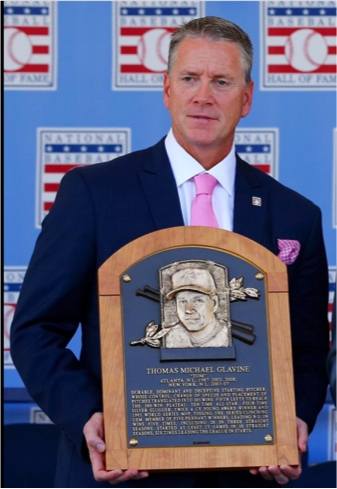 Even the most dominant relievers in the sport’s history didn’t stand much of a chance of qualifying for a club that’s based on raw value. Cooperstown closers like Dennis Eckersley (inducted 2004), Rollie Fingers (1992) and Goose Gossage (2005) were undeniably making an impact with their high-leverage heroics, but their season-by-season WAR doesn’t reflect that due to a lack of innings.
Even the most dominant relievers in the sport’s history didn’t stand much of a chance of qualifying for a club that’s based on raw value. Cooperstown closers like Dennis Eckersley (inducted 2004), Rollie Fingers (1992) and Goose Gossage (2005) were undeniably making an impact with their high-leverage heroics, but their season-by-season WAR doesn’t reflect that due to a lack of innings.
Same goes for the most recent generation of saves leaders—Mariano Rivera (eligible in 2019), Trevor Hoffman, Billy Wagner, etc. Rarely working outside of the ninth inning kept them all far below the threshold for passing this Hall of Fame’s test.
You will also notice the absence of several revered “winners” from this fraternity. Although consistently very good, Tom Glavine (inducted 2014) and Andy Pettitte (eligible in 2019) only twice posted seasons that cracked the top 10 in MLB pitcher WAR.
It’s certainly worth noting that Glavine and Pettitte were productive in the postseason, and that goes unacknowledged by our basic selection process. (I never said this would be perfect!)
Other real-life inductees who were snubbed include Chief Bender, Jack Chesbro, Jesse Haines, Waite Hoyt, Catfish Hunter, Addie Joss, Rube Marquard, Eppa Rixey, Edd Roush, Bruce Sutter, Don Sutton, and Hoyt Wilhelm.
WHO DIDN’T MAKE THE CUT—POSITION PLAYERS
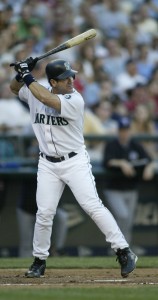 What does it take to be among the league’s most valuable position players? Usually, some semblance of all-around skills—positive defense and/or base running contributions to complement damage inflicted with the bat.
What does it take to be among the league’s most valuable position players? Usually, some semblance of all-around skills—positive defense and/or base running contributions to complement damage inflicted with the bat.
Harmon Killebrew (inducted in 1984), Tony Perez (2000), Willie Stargell (1988), Edgar Martinez (currently eligible), Vladimir Guerrero (eligible in 2017) and Jim Thome (2018)—just to name a handful—fail to cross over into this Hall of Fame on the strength of their run production alone. Speedy singles specialist Lou Brock (eligible in 1985) fell short, too.
With few exceptions, catchers were heavily discriminated against. It boils down to how the physical demands of the job limit their total playing time (opportunities for WAR accumulation) relative to their peers. Missing from the list below: Yogi Berra (inducted in 1972), Roy Campanella (1969), Mickey Cochrane (1947), Bill Dickey (1954), Gabby Hartnett (1955) and Ivan Rodriguez (eligible in 2017).
Notable exclusions from the other positions include Luis Aparicio, Jake Beckley, Craig Biggio, Jim Bottomley, Roger Bresnahan, Max Carey, Orlando Cepeda, Fred Clarke, Earle Combs, Kiki Cuyler, Hugh Duffy, Buck Ewing, Rick Ferrell, Nellie Fox, Chick Hafey, Billy Herman, Harry Hooper, George Kell, George Kelly, Barry Larkin, Tony Lazzeri, Freddy Lindstrom, Heinie Manush, Rabbit Maranville, Bill Mazeroski, Tommy McCarthy, Eddie Murray, Kirby Puckett, Jim Rice, Phil Rizzuto, Ray Schalk, Red Shoendienst, Enos Slaughter, Joe Tinker, Pie Traynor, Lloyd Waner, Zack Wheat, Dave Winfield and Ross Youngs.
At last, we have arrived at baseball’s ultimate WAR-riors. There are 233 of them—105 pitchers, 128 position players.
Remember that the order of induction follows the rules stated earlier. And keep in mind, these players qualified based on their American League and/or National League production; the Hall of Fame recognizes earlier stars of the American Association/National Association/Union Association era as “Pioneer/Executive” inductees.
*Players who earn inductions during their first year of eligibility have been bolded
**Players who are not inducted in the actual Hall of Fame have been underlined
1936 Grover Cleveland Alexander, Ty Cobb, Eddie Collins, Walter Johnson, Nap Lajoie, Christy Mathewson, Kid Nichols, Tris Speaker, Honus Wagner, Cy Young
The BBWAA took awhile to adopt the “five years post-retirement” condition for eligibility and rushed Babe Ruth into the class of ’36. But we want uniformity and will make him wait.
These 10 all-timers still unite for a pretty stacked collection of talent.
1937 Tim Keefe, Eddie Plank
1938 John Clarkson, George Davis
1939 Cap Anson, Roger Connor
1940 Dan Brouthers, Pud Galvin
1941 Jim McCormick, Babe Ruth
Late 19th-century workhorse McCormick is the first Cooperstown outsider to make it in here. He STARTED 74 games for the Cleveland Blues back in 1880! Led the league in ERA+, WHIP and complete games at various times during his career.
1942 Sam Crawford, Bill Dahlen
1943 Rogers Hornsby, Charles Radbourn
1944 Frankie Frisch, Harry Heilmann
1945 Lou Gehrig, Bobby Wallace
1946 Ed Delahanty, Amos Rusie
1947 Red Faber, Goose Goslin, Lefty Grove
Induction class size expands post-integration and features Grove—by any measure, one of the best southpaws ever.
1948 Stan Coveleski, Charlie Gehringer, Vic Willis
1949 Carl Hubbell, Billy Hamilton, Mickey Welch
1950 Jesse Burkett, Al Simmons, Ed Walsh
1951 Joe Cronin, Jimmie Foxx, Paul Waner
1952 Home Run Baker, Shoeless Joe Jackson, Ted Lyons
Shoeless Joe would’ve been a shoo-in for the HoF if not for the Black Sox Scandal. His early-career contributions for the Cleveland Naps—averaged 8.8 WAR from 1911 to 1913—were most impressive.
1953 Jack Glasscock, Mel Ott, Dazzy Vance
1954 Joe McGinnity, Arky Vaughan, Rube Waddell
1955 Eddie Cicotte, Hank Greenberg, Clark Griffith
1956 Luke Appling, Joe Gordon, Jack Powell
1957 Joe DiMaggio, Joe Medwick, Red Ruffing
1958 Lou Boudreau, Mordecai Brown, George Sisler
1959 Willie Keeler, Johnny Mize, Bill Terry
1960 Jimmy Collins, Elmer Flick, Joe Sewell
1961 Tommy Bond, Stan Hack, Hal Newhouser
1962 Bob Feller, Bobo Newsom, Jackie Robinson
1963 Bobby Doerr, Silver King, Dutch Leonard
1964 Larry Doby, Joe Kelley, Pee Wee Reese
1965 Dave Bancroft, Burleigh Grimes, Ralph Kiner
1966 Earl Averill, Heinie Groh, Ted Williams
1967 Johnny Evers, Art Fletcher, Dizzy Trout
1968 Richie Ashburn, Noodles Hahn, Bob Shawkey
1969 John McGraw, Stan Musial, Early Wynn
1970 Frank Chance, Billy Pierce, Duke Snider
1971 King Kelly, Jim O’Rourke, Sam Thompson
1972 Chuck Klein, Al Orth, Herb Pennock
1973 Charlie Keller, Claude Passeau, Robin Roberts, Warren Spahn
Induction class size expands again to keep pace with league expansion.
1974 Rocky Colavito, Larry Jackson, Mickey Mantle, Eddie Mathews
1975 Ken Boyer, Dizzy Dean, Don Drysdale, Hughie Jennings
1976 Frank Dwyer, George Gore, Paul Hines, Bill Nicholson
An example of how this selection process could be awkward…Three of these four inductees died too soon to attend their ceremony, pushed back decades by their lack of career WAR.
1977 Ernie Banks, Jim Bunning, Eddie Stanky, Roy Thomas
1978 Johnny Callison, Roberto Clemente, Camilo Pascual, Hack Wilson
1979 Fred Dunlap, Bob Lemon, Willie Mays, Preacher Roe
1980 Dean Chance, Al Kaline, Ron Santo, Deacon White
1981 Bob Gibson, Jim Maloney Juan Marichal, Vada Pinson
1982 Hank Aaron, Frank Robinson, John Ward, Billy Williams
1983 Dick Allen, Brooks Robinson, Al Rosen, Chris Short
1984 Larry Corcoran, Tex Hughson, Frank Sullivan, Wilbur Wood
1985 Dick Radatz
Finally, the backlog of qualified candidates loosens enough so that one player gets the stage to himself.
Not much of a treat for the fans, though. Radatz was dead last among our 233 members with only 16.1 WAR. Excluding his first three seasons in the majors, the right-handed reliever was worse than replacement level!
1986 Willie McCovey
1987 none
1988 Luis Tiant
1989 Johnny Bench, Fergie Jenkins, Gaylord Perry, Carl Yastrzemski
1990 Jim Kaat, Jon Matlack, Joe Morgan, Jim Palmer
1991 Rod Carew
1992 Cesar Cedeno, Bobby Grich, Pete Rose, Tom Seaver
1993 Vida Blue, Reggie Jackson, Phil Niekro
1994 Steve Carlton, Ron Guidry
1995 Tommy John, Mike Schmidt
1996 none
1997 Rick Reuschel
1998 Bert Blyleven, Gary Carter
1999 George Brett, Carlton Fisk, Nolan Ryan, Robin Yount
2000 Teddy Higuera, Frank Tanana
2001 none
2002 Andre Dawson, Ozzie Smith, Alan Trammell, Frank Viola
Trammell just fell off the BBWAA ballot after 15 years of middling support, but he would have been granted immortality immediately by these rules.
2003 Ryne Sandberg, Fernando Valenzuela
2004 Jimmy Key, Dennis Martinez, Dave Stieb
2005 Wade Boggs, Tom Candiotti, Mark Langston
2006 Albert Belle, Orel Hershiser
2007 Tony Gwynn, Cal Ripken Jr., Brett Saberhagen
2008 Chuck Finley, Chuck Knoblauch, Tim Raines, Jose Rijo
Raines is still waiting his turn in real life, which is absurd. We are running out of patience.
2009 David Cone, Rickey Henderson
2010 Roberto Alomar, Kevin Appier
2011 Jeff Bagwell, Kevin Brown, Larry Walker
2012 Brad Radke
2013 Barry Bonds, Roger Clemens, Kenny Lofton, Curt Schilling
Love ’em or hate ’em on a personal level, this kind of mega class if WAY more interesting than The Brad Radke Experience.
2014 Greg Maddux, Mike Mussina, Mike Piazza, Frank Thomas
2015 Randy Johnson, Pedro Martinez, Kenny Rogers, John Smoltz
2016 Jim Edmonds, Nomar Garciaparra, Ken Griffey Jr., Brandon Webb
And looking forward, this is how the next few induction classes would shake out…
2017 none
2018 Andruw Jones, Chipper Jones, Scott Rolen, Carlos Zambrano
2019 Roy Halladay, Todd Helton, Roy Oswalt
Aggregated from Baseball-Reference.com, this spreadsheet of annual WAR leaders is fun for reflecting on some of the outlier seasons that this crazy sport produces: Year-by-Year bWAR Leaders
Feel free to leave your thoughts in the comments, or address them directly to me on Twitter @MrElyminator.
